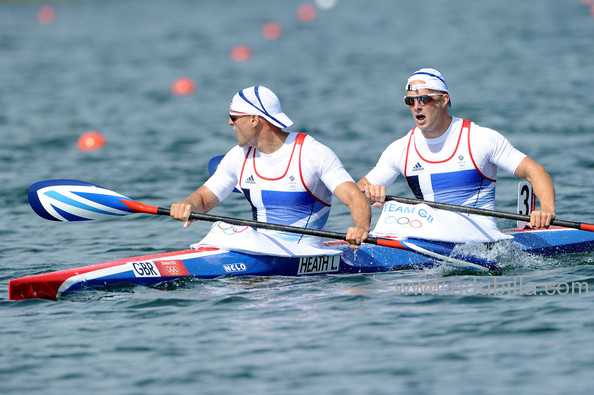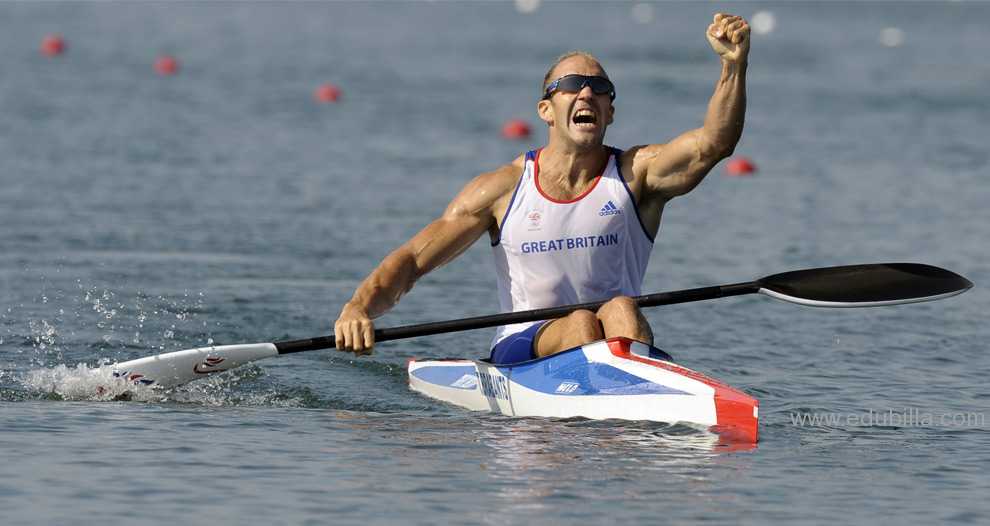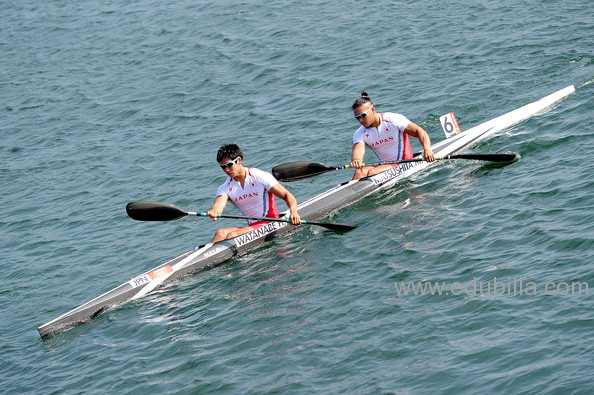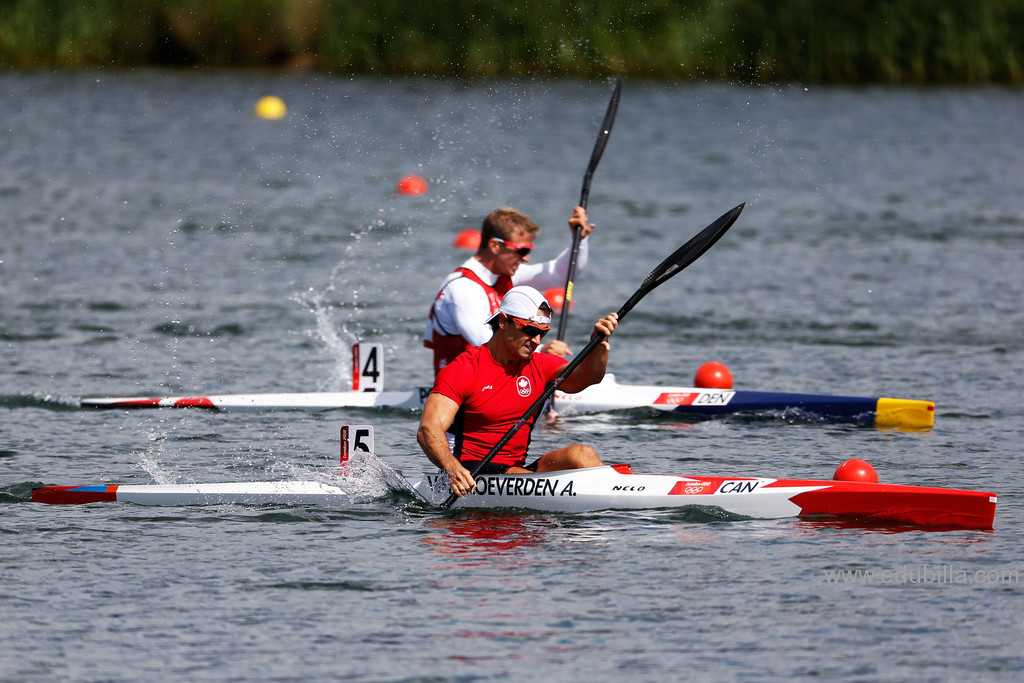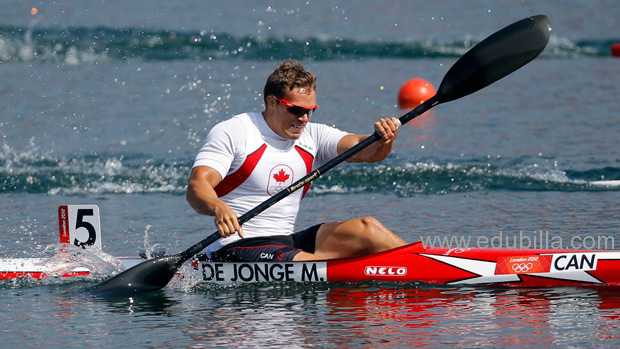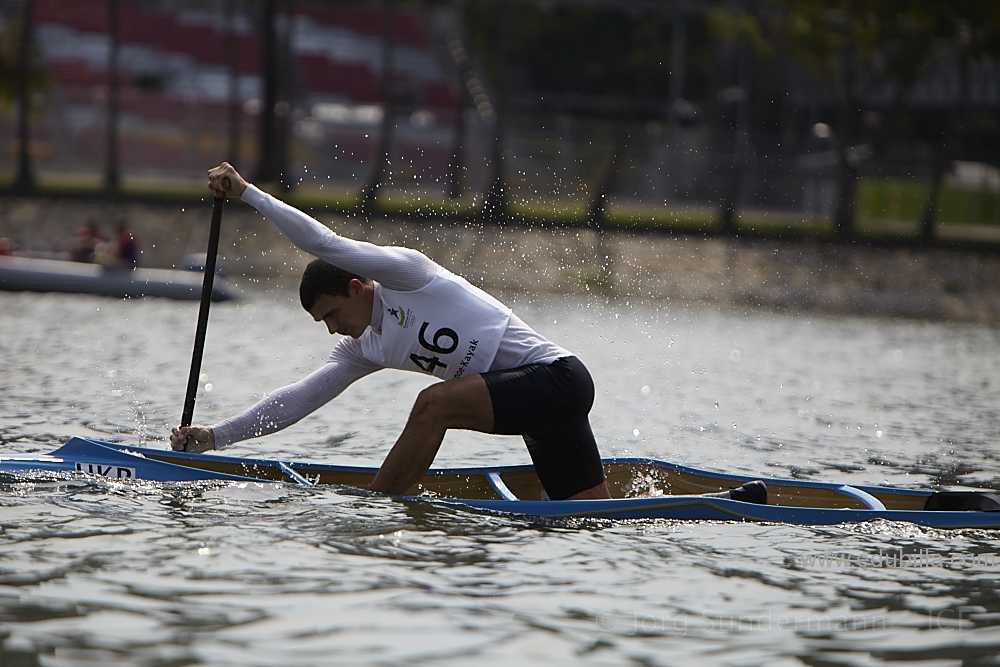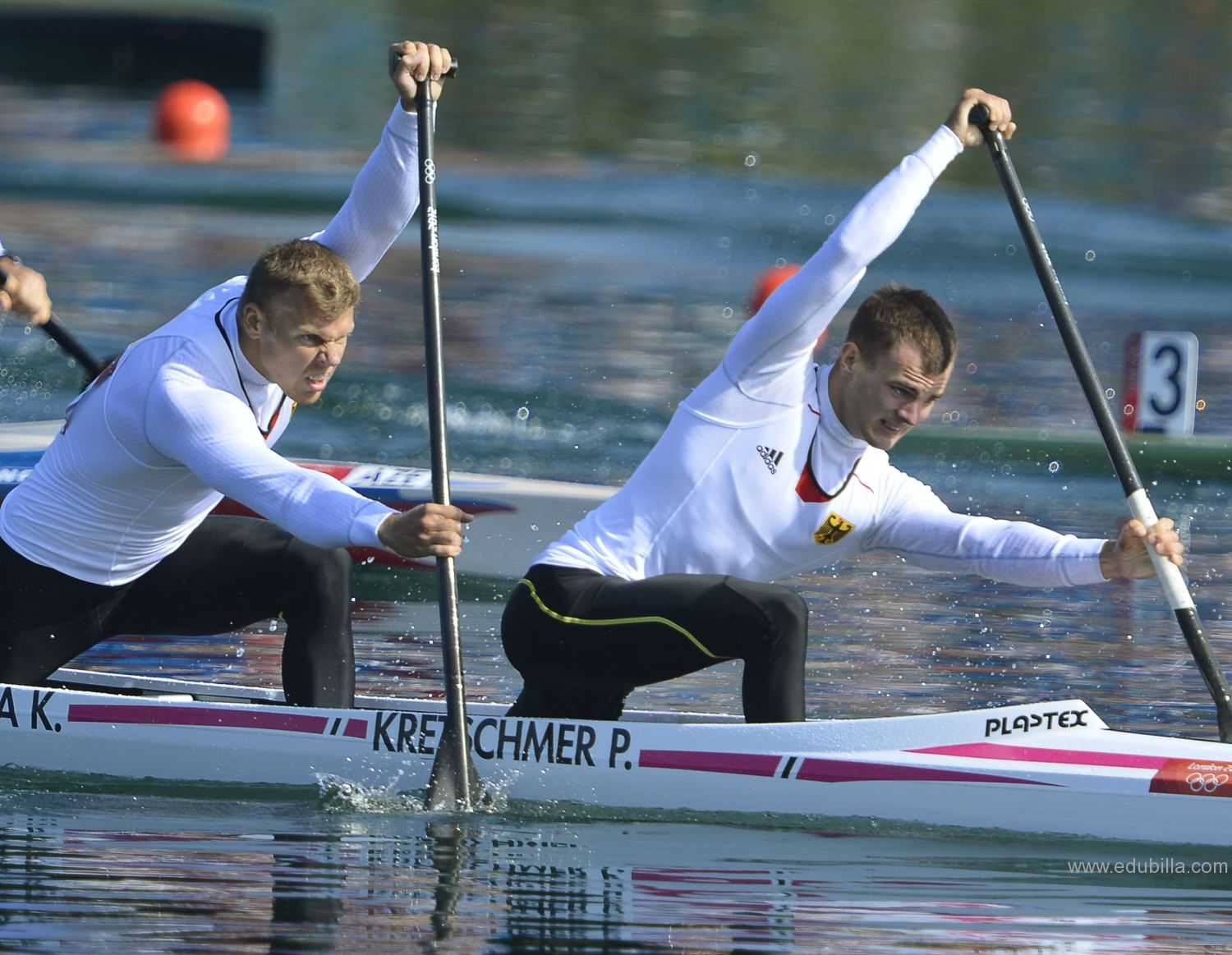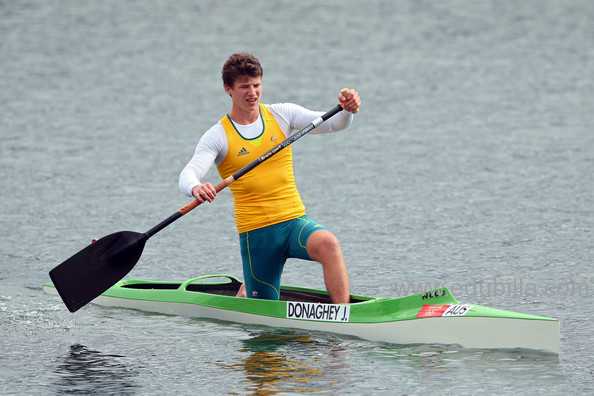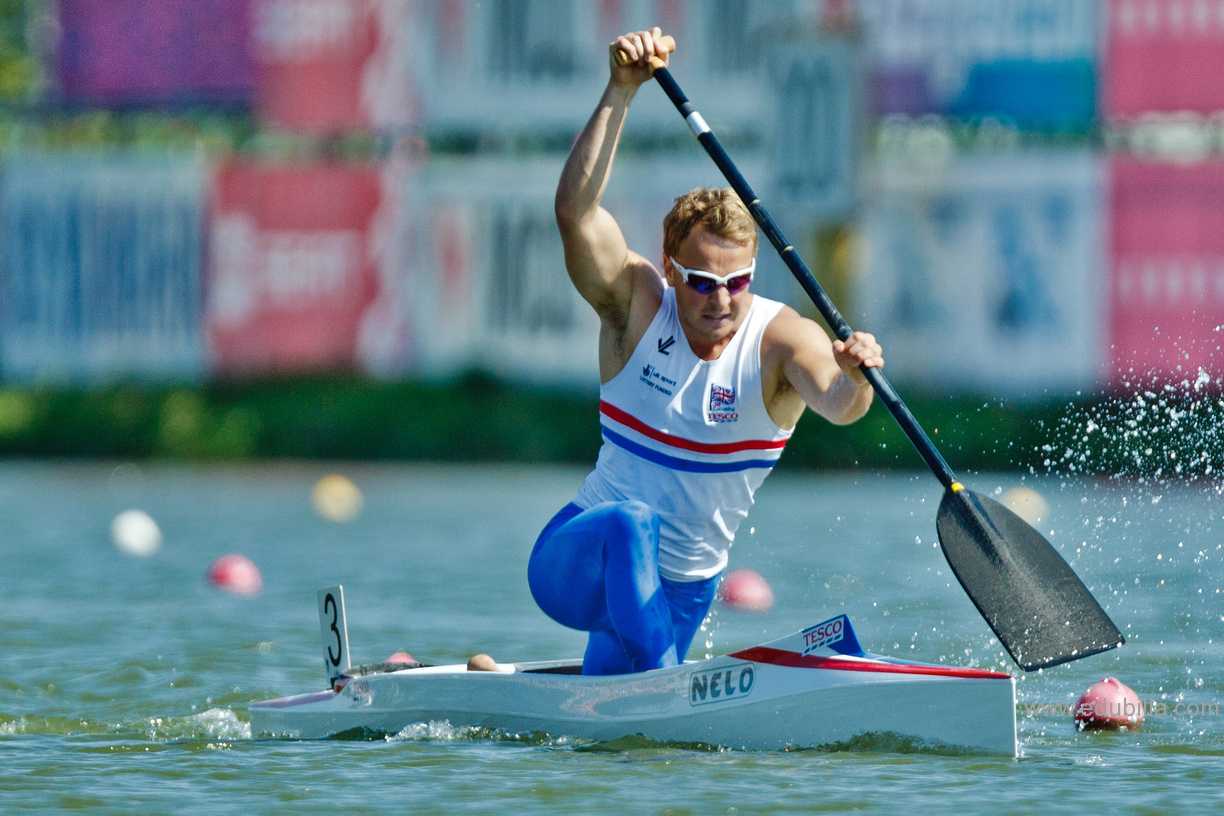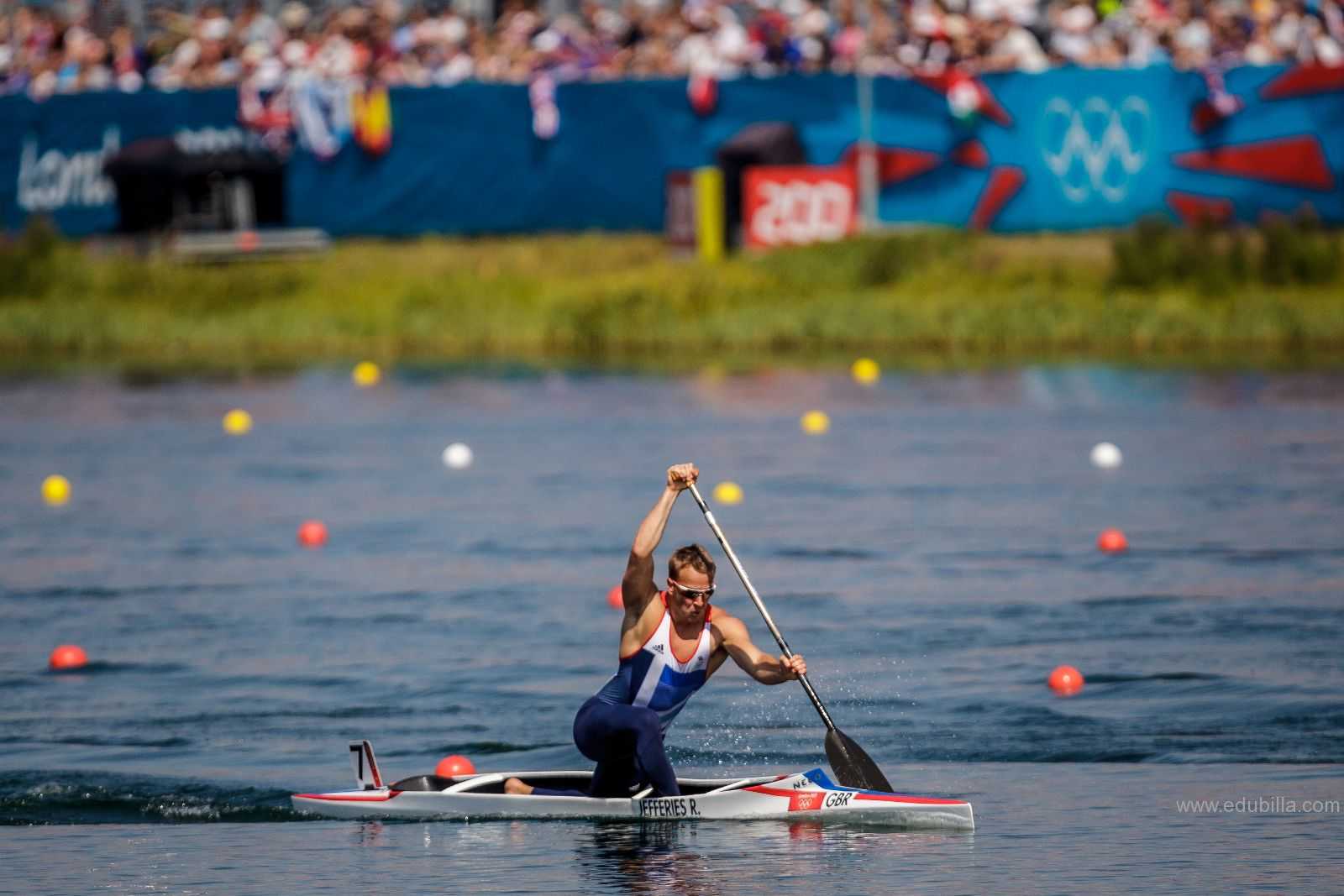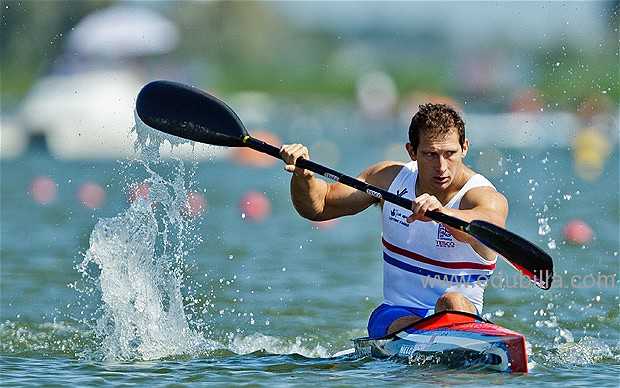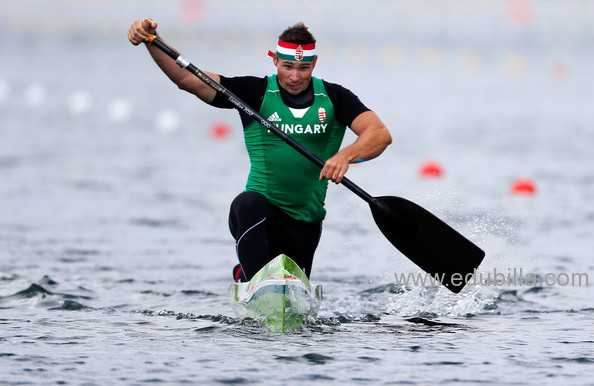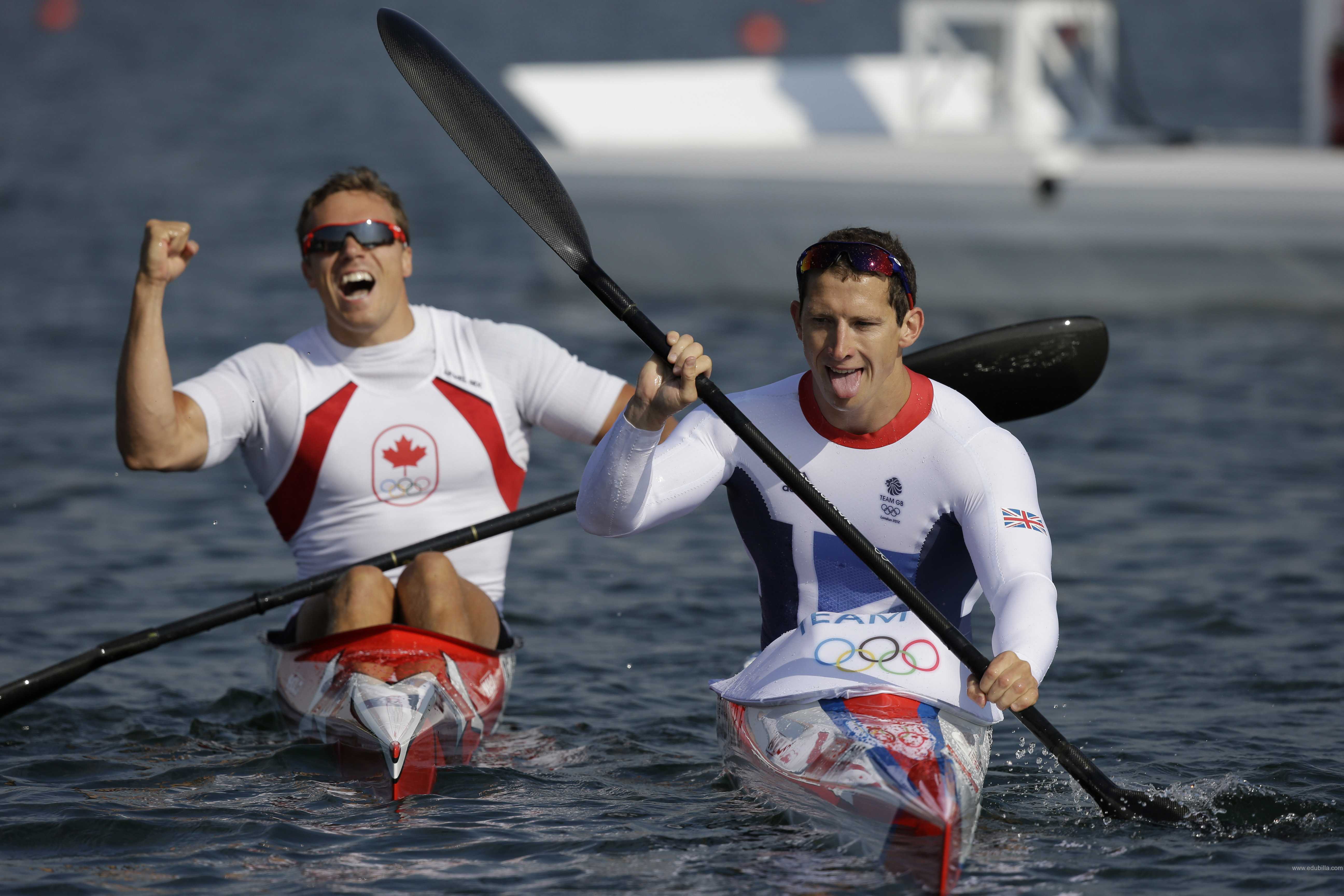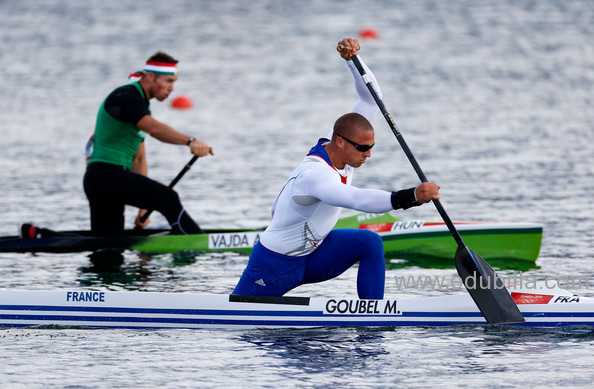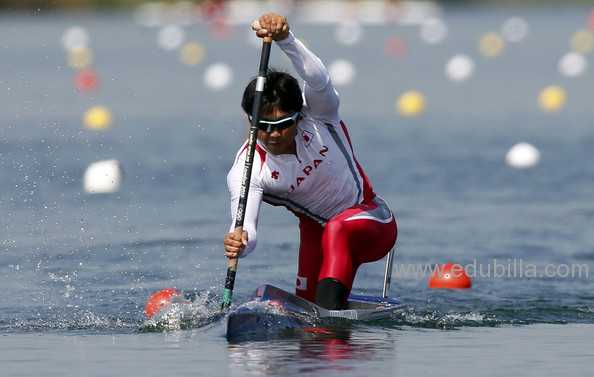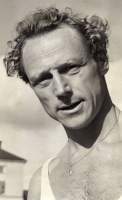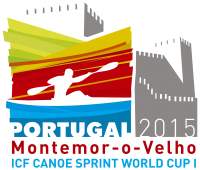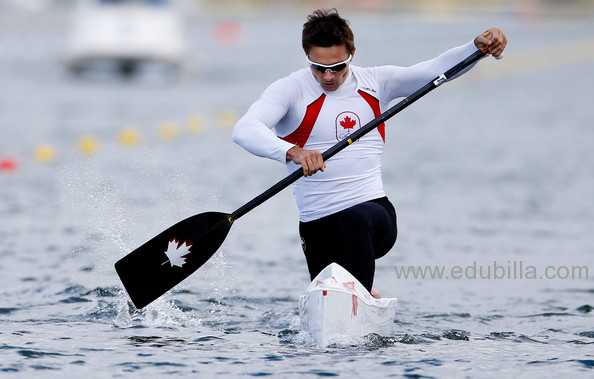
Overview Of Canoe sprint
Canoe sprint is a sport in which athletes race canoes or kayaks on calm water.
Race categories vary by the number of athletes in the boat, the length of the course, and whether the boat is a canoe or kayak. Canoe sprints are sometimes referred to as flatwater racing. Canoe sprint takes place on a straight course divided in lanes, on calm water. The distances recognised by the ICF for international races are 200 m, 500 m, and 1000 m. Each boat has its own designated lane, except for races over more than 1000 m, where there also may be turning points. ICF recognised races over 1000m include the 5000m and 10000m events. For each race a number of heats, semi-finals and a final may be necessary, depending on the number of competitors.
International Canoe Federation:
The sport is governed by the International Canoe Federation. The International Canoe Federation is the worldwide canoeing organization and creates the standard rules for the different disciplines of canoe/kayak competition. The ICF recognizes several competitive and non-competitive disciplines of canoeing, of which Sprint and Slalom are the only two competing in the Olympic games. National organisations include the United States Canoe Association, the British Canoe Union, Singapore Canoe Federation, Croatian Canoe Federation, Australian Canoeing, and the Pakistan Canoe and Kayak Federation.
On the whole, Europe has dominated the sport, winning over 90 per cent of all available medals.
The official boats recognised by the ICF as 'International Boats' are: K1, K2, K4, C1, C2 and C4, where the number indicates the number of paddlers, “K” stands for kayak and “C” for Canadian or canoe, depending on location. The ICF rules for these boats define, among others, the maximum length, the minimum weight and the shape of the boats. For example, by ICF rules, a K1 is at most 520 cm long, and weighs at least 8 kg for marathons or 12 kg for sprints. In 2000, after the Olympic Games in Sydney, the ICF withdrew width restrictions on all boats, spurring a flurry of innovations in boat designs. Modern boats are usually made of carbon fiber or aramid fiber (e.g., Kevlar) with epoxy resin. Additionally, some competitive boats use variants of high-performance fiber-glass.
Game Rules
In Canoe Sprint events, athletes race on a straight course, each boat in a separate lane, over three different distances: 200m, 500m, 1000m and 5000m as well as the 200m x 4 relay. There are kayak events in single (K1), double (K2) and four (K4) boats, and canoe events in single (C1), double (C2) and four (C4) boats. Traditionally, the canoe events have been exclusively for men but there now is a growing women’s contingent since C1W and C2W were added to the 2010 World Championship program. The International Canoe Federation has shown its commitment to gender equity in the Olympic program by adding woman's canoe to the 2020 Olympic program. In a Kayak, the paddler is seated and uses a two-blade paddle, while in a canoe, the paddler is kneeling on one knee, and uses a single-blade paddle. Canoe Sprint became an Olympic discipline in 1936 and its program includes events over the distances of 200m, 500m and 1000m.
The rules of Canoe Sprint are determined by the International Canoe Federation (ICF) who have a congress every two years which allows for any major changes to the rules.
Minor changes to the rules are permitted in the year that there is no congress by the ICF Canoe Sprint Committee.
The rules used for racing in the UK are based upon the International rules set by the ICF but are adjusted to reflect the current GB requirements and are reviewed in November each year at the BCU Canoe Sprint Racing Committee Annual Consultative Meeting (ACM).
Detailed Canoe Slalom Rules Can Be Downloaded From Documents
Equipments Need For Canoe sprint
Canoe:
A light, narrow, open boat propelled by one, two or four paddlers from a kneeling position, using single-bladed paddles. The strokes are executed always on one side. The boats steering is controlled by the paddlers use of the paddle. The drag of the paddle creates resistance, causing the stern of a canoe to turn in the required direction.
Blade:
The wide part of a paddle which passes through the water. The canoe paddler uses a paddle which has one flat blade on one end of the paddle shaft, which may not be fixed to the boat in any way.
Cockpit:
The enclosed space in a kayak or slalom canoe where the paddler or paddlers sit.
Deck:
The closed-in area over the bow and/or stem of a canoe or kayak, intended to shed water and strengthen the gunwales.
Double-bladed paddle (used for kayaks):
A paddle with a blade at each end, used in kayaks to paddle on each side of the boat.
Grip:
The end of a canoe paddle opposite from the blade.
Hull:
The frame or body of a boat.
Kayak:
A light, narrow boat, with a small space for the paddler to sit in. (Cockpit), propelled by one or more paddlers from a seating position, using double-bladed paddles. A kayak is steered by rudder controlled by the feet’s of the bowman in the front cockpit.
Single-bladed paddle (used for canoe):
A paddle with a blade at one end.
Spray Skirts:
Paddlers wear spray skirts which attach around the cockpit and seal them into the boat to prevent water from entering.
History Of Canoe sprint
Canoe sprint has two different types of craft, the kayak and the canoe. The kayak probably originates from Greenland, where it was used by the Eskimos, primarily for hunting, fishing and transportation. The canoe was used all over the world as a method of transportation, trade and war. The first official sporting events were created utilising both of these crafts during the mid-19th century. Canoe sprint has been the traditional form of racing since the inception.
History and basics:
The word kayak, meaning “man-boat” in Eskimo, was found predominately in North America, Siberia and Greenland. They were ideal for individual transport and were used primarily for hunting and fishing. The canoe, on the other hand, was used on a wider scale. From Native American tribes to the Polynesians, the canoe had a variety uses, primarily transport, trade and warfare. The basics of Canoe sprint are simple. Get to the finish as fast as possible, the fastest person wins.
Canoe/kayak differences:
The design of canoes varied, depending on their use and where they were built; they varied between open-topped bark canoes to dug-out trees to 130ft war canoes. In contrast, kayaks were built to ensure icy Arctic water did not enter the boat. They were made by stretching animal skins over a wooden frame and could generally only carry one man at a time. Kayaks are closed boats with a cockpit for sitting in. Athletes paddle from a sitting position with a double-blade paddle. Canoes are open boats paddled from a kneeling position with a single-blade paddle.
First competition:
Canoe sport competitions began in the mid-19th century. The Royal Canoe Club of London was formed in 1866 and was the first organisation interested in developing the sport. In 1871 the New York Canoe Club was founded. The first women’s competition was organised in Russia. By the 1890s, canoe sport was popular all over the European continent. Since canoe sprints entered the Olympics in 1936, its events have changed and adapted in order to improve its overall standing and follow current trends and boat technological advances.
Olympic history:
In 1924 in Paris, flatwater canoeing featured at the Games as a demonstration sport. It became an Olympic discipline in Berlin in 1936. Later, some of its events disappeared to make way for new ones.
Overall, Europe dominates this sport, at both the Olympic Games and the World Championships, winning 90 per cent of the medals up for grabs. Since the 1948 Games in London, women have competed in the kayak event only. Today, the Olympic canoe/kayak flatwater programme comprises a total of 12 events.
The recent trend is towards reducing the course distance. At the beginning, in the World Championships, the courses were staged over 1,000 and 10,000 metres for men and 5,000 metres for women. Today, they are over distances of 200, 500 and 1 000 metres. The Olympic events take place over 500 and 1,000 metres.
For the 2012 Games in London, the three men’s flatwater 500 metres events will be replaced by 200m events.
Origin Of Canoe sprint
Intrepid Scottish barrister, John MacGregor was the first European to use an Inuit Kayak for tourism and excursion purposes, he also formed the first-ever kayak club “The Royal Canoe Club of London” on the 25 July 1866 in London.
Women’s in Canoeing competition:
The first Canoeing competition, organised by MacGregor, was held in 1869. In 1871 the “New York Canoe Club” was established. By the 1890s, canoe sport was popular all over the European continent.
Canoe Sprint became a full medal sport at the 1936 Berlin Games, the Women’s category was added to the Olympic programme in 1948. The British Canoe Union itself was formed in 1936 in order to send a Canoeing team to the 1936 Olympic Games. Canoe Sprint’s Olympic Programme has varied a great deal over the years and has changed and adapted in order to improve its overall standing and to follow current trends and boat technological advances.
Competition background:
- The Scottish barrister, John MacGregor is credited with popularising canoeing as a sport in Europe and the United States. He founded the British Royal Canoe Club (RCC) on the 25th July 1866.
- MacGrgor then went on to organise the first recognised canoeing competition 1869.
- Transatlantic competition soon commenced with the New York Canoe Club being founded in 1871.
- The first women’s competition was organised in Russia, and by the 1890s canoe sport was popular and had created a large following, most prominent in Europe.
- Under the auspices of the Internationale Repräsentantenschaft Kanusport (IRK), which was formed in January 1924 in Copenhagen, the first European Championships was held on the 19th August 1933 in Prague.
- Following the approval International Olympic Committee on the 16th May 1934, Canoe Sprint became an Olympic discipline and debuted at the 1936 Berlin Olympic Games.
- The modern International Canoe Federation (ICF) was established in 1946.
- The 1948 London Olympic Games saw the introduction of the Women’s K1 500m category.
- The 2010 ICF Canoe Sprint World Championships were, perhaps, the most advancing Championships in modern history with the introduction of Women’s C1 200m, an exhibition Women’s C2 500m race and the inclusion of seven Paracanoe events.
- The 200m-sprint was introduced in the 2012 London Olympic Games for the K1 men and women and C1 men.
First Olympic medal:
Great Britain won its first Olympic medal in Canoe Sprint in 2000 at the Sydney Olympics when Tim Brabants took bronze in the K1M 1000m. Since then Sprint athletes have now won a total of 6 Olympic medals.
Governing Bodies
International Canoe Federation:
The International Canoe Federation (ICF) is the umbrella organization of all national canoe organizations worldwide. It is headquartered in Lausanne, Switzerland, and administers all aspects of canoe sport worldwide. 157 countries are affiliated with the ICF after seven national federations were added at the 2008 ICF Congress in Rome.
The first federation was the Internationale Repräsentantschaft für Kanusport, formed before World War II. The International Canoe Federation (ICF) was founded in 1946. Canoeing became a full medal sport at the 1936 Berlin Games.
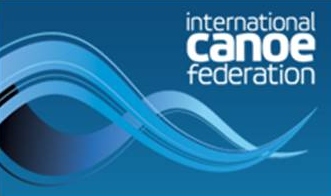
Shorter and faster:
In 1924, canoe sprint was introduced to the Olympic programme as a demonstration sport. It became a full medal sport in 1936 with both canoe and kayak events. Women began competing in kayaks from 1948. Recent trends have led away from 5,000m and 10,000m races toward shorter 200m, 500m and 1,000m competitions.
Canoe sprint vs. canoe slalom:
The International Canoe Federation (ICF) covers canoeing and kayaking, and both of these crafts are used in the two main disciplines. Canoe sprint is based on pure “speed on the course” and requires a calm water surface. Canoe slalom is conducted on flowing water, rushing down a steep course where competitors attempt to negotiate a slalom course in single runs against the clock.
John MacGregor:
Despite the original origins of canoeing, a Scotsman by the name of John MacGregor would be known by many as the father of modern kayaking. He designed his own kayak, called the Rob Roy, 4m long and 75cm wide, weighing 30kg. Between 1864 and 1867 he toured the British waters and travelled throughout Europe. He founded the Royal Canoe Club in 1866. In 20 years, canoeing would become incredibly popular throughout Europe.
Current events:
There are single, double and four man events. Women race 200m and 500m in a single kayak (K1) and 500m as a double (K2) and four (K4). Male kayakers compete in K1 and K2 at 200m and 1000m and in K4 at 1000m . There are currently only canoe events for men; they are performed in a single (C1) at 200m and 1,000m and double (C2) at 1,000m. In canoe slalom there is only K1, C1 and C2 for men and K1 for women, with no discrepancies over distances. As each slalom course is different and has its various nuances, the athletes must know the course well if they are to succeed.
Competition procedure:
In canoe sprint races, competitors are assigned to lanes. Women compete only in kayaks. In Canoe Slalom, the athletes race in order to achieve the best time, while making sure to follow the course accurately and without incurring a penalty to their overall time.
To Visit ICF Click Here.
http://www.canoeicf.com/
Awards Related To Canoe sprint
PCKF Award:
The PCKF award was launched in 2007 for men and the award was expanded to include female players in 2010.
Halberg Awards:
The Halberg Awards is the country's pre-eminent event to honour and celebrate sporting excellence and raise funds for the Halberg Disability Sport Foundation.
Halberg Award categories:
Emerging Talent Award
SKY SPORT Coach of Year Award
Lion Foundation Lifetime Achievement Award
Sport New Zealand Leadership Award
High Performance Sport New Zealand Sportsman of the Year
High Performance Sport New Zealand Sportswoman of the Year
Halberg Disability Sport Foundation Disabled Sportsperson of the Year
Halberg Disability Sport Foundation Team of the Year
Sports Hall of Fame Induction
New Zealand’s Favourite Sporting Moment - public vote award
Halberg Award - the supreme award selected from the winners of the Sportsman, Sportswoman, Disabled Sportsperson and Team of the Year Award categories.
Coiste Siamsa Sportstar Awards:
The awards are presented to Garda members who have achieved success in their chosen sporting areas, locally, nationally and internationally.
Australian Canoeing Award:
The Australian Canoe Federation (ACF) was formed on 10 September 1949 at a meeting held in New South Wales.South Australia, Victoria and New South Wales were represented. Affiliation with the International Canoe Federation (ICF)
Australian Canoeing Award Categories:
CANOEIST OF THE YEAR
COACH OF THE YEAR
INSTRUCTOR AND GUIDE OF THE YEAR
JUNIOR CANOEIST OF THE YEAR
PARACANOEIST OF THE YEAR
TEAM OF THE YEAR
PHOTO OF THE YEAR
PEOPLE’S CHOICE AWARD
PRESIDENT’S AWARD
Sample Documents Of Canoe sprint
-Sachin Tendulkar

